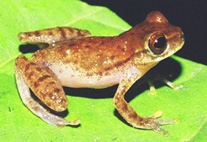Abstract
Heterodera fengi n. sp. is described and illustrated from bamboo (Phyllostachys pubescens Mazel) based on morphology and molecular analyses of rRNA LSU D2D3 region and ITS. This new species belongs to the Cyperi group. Cysts are characterized by prominent vulval cone with ambifenestrate, bifurcate underbridge that is thicker in middle and a 47.0 (40.0–60.0) μm long vulval slit, but without bullae. The second-stage juveniles are characterized by a 23.2 (22.0–24.0) μm long stylet with slightly projected or anteriorly flattened knobs, three incisures in lateral field, a 70.2 (62.5–77.0) μm long tail with bluntly rounded terminus and hyaline portion ca 58.9 (50.0–62.5)% of the tail length. Males are character-ized by a 25.1 (24.5–26.3) μm long stylet with rounded knobs sloping posteriorly, four incisures in lateral field, a 29.8 (27.5–31.3) μm long spicule with bifurcate tip. Phylogenetic analysis shows that the species has unique D2D3 and ITS rRNA sequences and RFLP-ITS-rRNA profiles. Heterodera fengi n. sp. is closest to H. elachista in dendrograms inferred from both DNA sequences.

